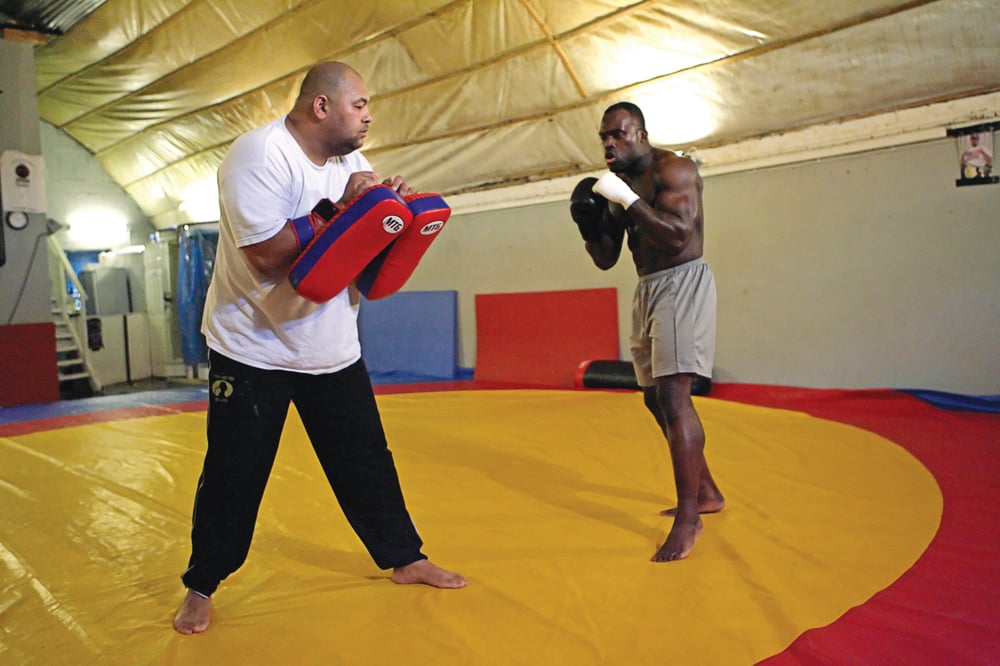
Issue 038
June 2008
Not to be confused with the tasty noodle dish... Thai pads are thick rectangular pads usually made from leather that are used for striking. They originated in the sport of Muay Thai, hence the name, but are now used extensively by Mixed Martial Arts (MMA) trainers.
Why Use Them?
Thai Pads are the most versatile tool for working strikes and combinations. They allow you to work on power, accuracy, speed, timing and footwork against a mobile target. They are also an excellent conditioning tool, both for developing fight fitness and for getting the body used to landing hard strikes.
When Would You Use Them?
Most commonly used for striking drills on the feet, they can also be used for drilling ground and pound. The beauty of Thai pads is that they can be adapted for striking at any range.
Key Features
Material
Most Thai pads are made from leather, but they can also be found in vinyl and other materials. Leather ones are by far the most durable, and the others are generally avoided like the plague by anyone remotely serious about their training.
Dimensions
Thai pads come in different sizes. Larger, thicker ones may be better for heavy duty striking work while the smaller, thinner ones can be more easily used for drills involving wrestling or clinch work. Longer ones are a bonus if you have any doubts about your training partner’s accuracy.
Firmness
Thai pads vary in how hard or soft they are, depending on what they’ve been filled with. How much give you want in your pads is a matter of personal preference, but you certainly don’t want them to be too soft, otherwise you’ll feel like you’re hitting a pillow.

Fastening
A Thai pad usually has a loop at the top to grip, and one or two fasteners to secure the pad to the arm. There are various types of fastening mechanisms, ranging from buckles to various configurations of Velcro. Factors to consider are how securely they hold the pad in place, ease of use and comfort. The thickness of the straps will also affect how they feel to wear, with thicker straps generally being preferred.

General Tips
Your trainer
When working with pads, the most important thing is the person holding them. Feeding pads is an art in itself, and takes practice. If you are holding pads, work on holding them in a comfortable position, with minimal strain on your own body; giving the right amount of pressure back as the fighter lands the strike; moving around in a realistic way and setting good combinations.
Check stitching and workmanship
Bear in mind that your Thai pads are going to take one hell of a hammering. Any slight defects in the stitching may turn into gaping holes after a few thousand round kicks, so make sure the quality is up to scratch when you buy them. The loop and fastening straps need to be very securely attached. Remember that to a large extent you get what you pay for, and that it’s worth paying a bit extra for a set that will last you for years, rather than one you’ll be looking to replace six months down the line.
...










